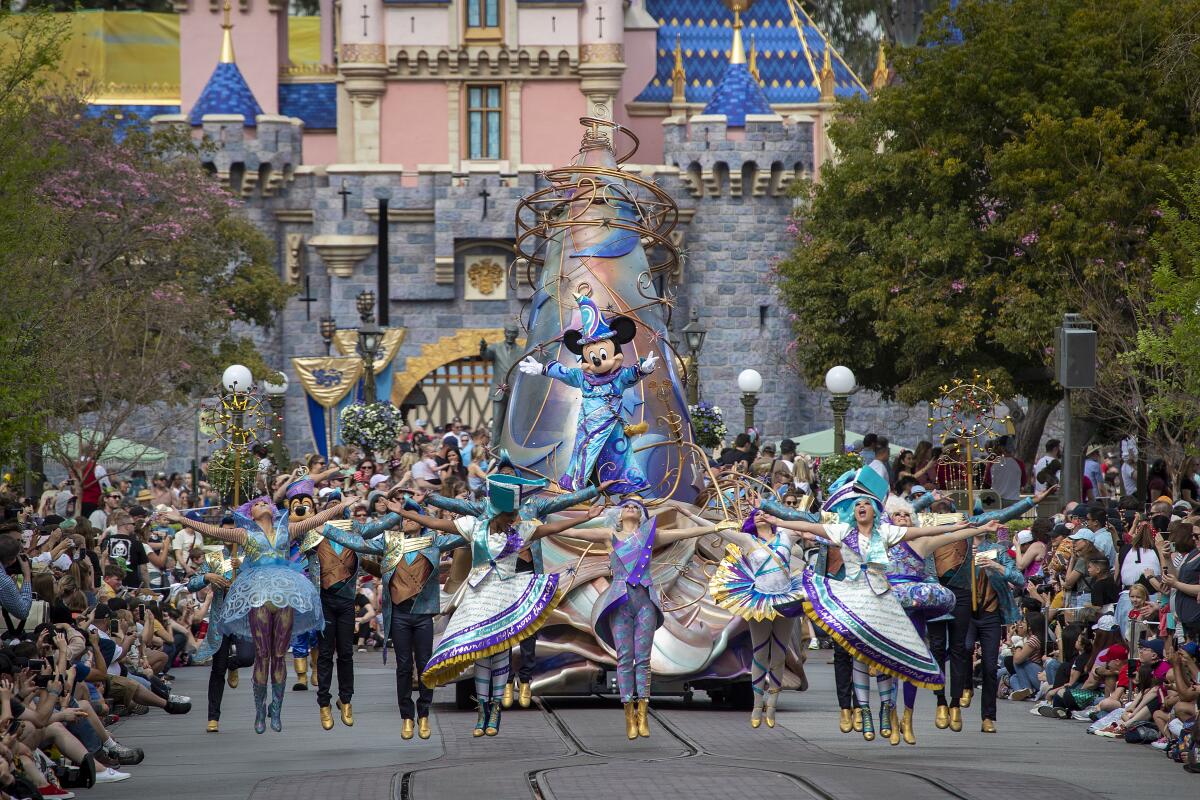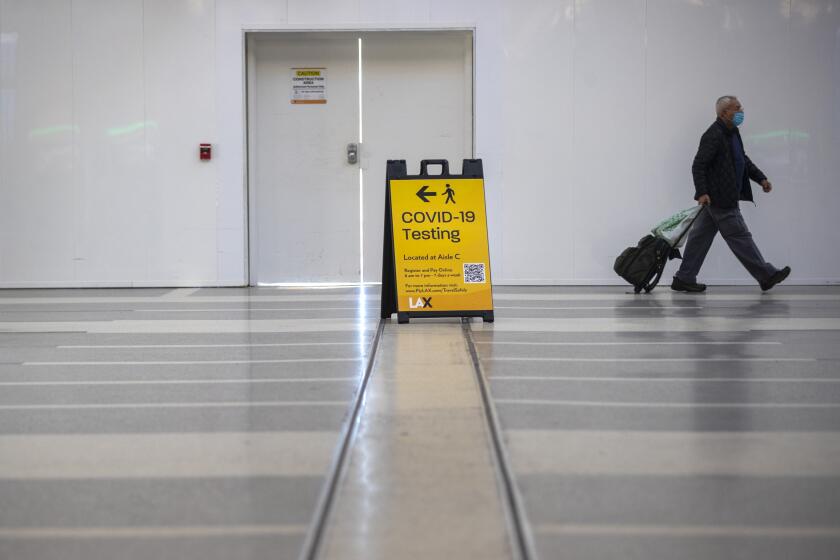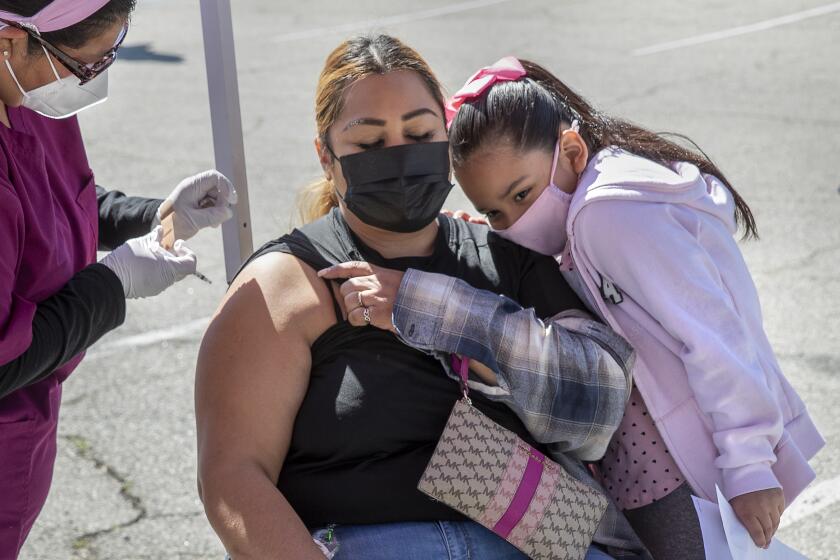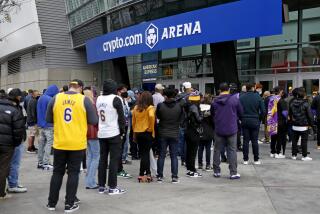California theme parks, stadiums can reopen as soon as April 1 under revamped COVID-19 rules

California theme parks and sports stadiums will be allowed to welcome back visitors as early as April 1 under new guidance the state unveiled Friday.
While the changes don’t mean business as usual for the venues, they do reflect the state’s growing sentiment that, with coronavirus case rates on the decline and the COVID-19 vaccine rollout continuing to ramp up, it is now possible to resume some activities — particularly those that can be held outdoors with additional safety modifications.
“With the increased distribution of the vaccine, with the behavior of Californians who have taken this pandemic seriously, who have adapted their behavior accordingly … we feel like this is a good time to begin to provide additional visibility into how we can move forward opening parts of the economy,” Dee Dee Myers, senior advisor to Gov. Gavin Newsom and director of the governor’s Office of Business and Economic Development, told reporters in a briefing Friday. “This gives some of the bigger employers a chance to ramp up, get ready for April 1, should they be in an appropriate tier, and to begin to move forward based on the data and the science.”
Four weeks from now, amusement parks will be eligible to reopen, with restrictions, in counties that are in the red tier — the second-strictest of California’s four-category reopening road map.
Capacity will be limited to 15% for parks in counties that are in the red tier; the cap rises to 25% once a county progresses to orange and 35% upon reaching the most lenient tier, yellow.
Officials said attendance will be limited to in-state visitors. Other restrictions will include no indoor dining and limits on indoor rides; details on those were still being worked out.
A travel advisory remains in place in California, which urges residents to avoid venturing more than 120 miles from home or to other states or countries, except in connection with essential travel. The advisory also strongly discourages nonessential travelers from entering the state and, if they do, to adhere to a 10-day quarantine.
L.A. County still has a mandatory 10-day travel quarantine in place, although those who routinely cross state and national borders for essential travel are exempt. California officials say travel increases the risk of coronavirus variants entering the state, and the U.S. Centers for Disease Control and Prevention has repeatedly urged Americans not to travel.
Progress against the COVID-19 pandemic could be set back by spring travel, L.A. County health officials warn.
Outdoor sports — with fans — and live performances also will be allowed to resume April 1, subject to the following limitations:
- For counties in the strictest tier, purple, capacity will be limited to 100 people or fewer, and attendance will be regionally limited. Advance reservations will be required, and there will be no concession or concourse sales.
- In the red tier, capacity will be limited to 20%, with primarily in-seat concession sales.
- The capacity limit will rise to 33% for counties in the orange tier and 67% for those in the yellow. Attendance will be limited to in-state visitors in the red, orange and yellow tiers.
Counties that have entered the red tier include Santa Clara, home to California’s Great America theme park.
Three counties in Southern California with large theme parks — Los Angeles, Orange and San Diego — are in the purple tier and will not be able to open under the new guidance until they enter the red tier. They are expected to enter the red tier soon, but the exact timing depends, in part, on when California can administer an additional 400,000 vaccinations to people living in the state’s lowest-income areas, which will trigger a broad relaxation of the opening criteria.
Even when meeting the state’s threshold, counties have the authority to impose stricter limits than those authorized by the state.
Dr. Paul Simon, chief science officer for the L.A. County Department of Public Health, said Friday that the county has not had a chance to closely examine the state’s new rules, so he couldn’t give an immediate response as to how his department will respond.
Generally speaking, though, L.A. County intends to align as much as possible with the state’s rules.
“Within the next week, we’ll be able to provide a response, I would hope,” Simon said.
As of today, only the Giants among California’s five MLB teams can admit more than 100 fans, but Dodgers and Angels are close to falling out of the purple tier.
Newsom administration officials said the changes are being made with a clearer understanding of how fresh circulating air, masking and maintaining physical distancing help blunt transmission of the coronavirus.
However, Friday’s announcement still represents one of the most aggressive relaxations of California’s coronavirus restrictions since the pandemic began.
Dr. Mark Ghaly, California’s health and human services secretary, said the time is right for amusement parks to reopen in counties that have exited the most restrictive tier, as coronavirus case rates have declined in the state.
“With the advent of vaccines and being able to increase the protection across our state through vaccination … we feel like now is the appropriate time to begin to reintroduce these activities in some fashion and, again, in a guarded way, in a slow and steady way, with the other protective factors of the blueprint all sort of wrapped around it,” he said during a briefing.
State officials, he added, “have much more confidence” that reopening theme parks can be done safely at this point.
Should coronavirus case rates rise to the level that would send a county back into the purple tier, its theme parks would again be ordered to close, Ghaly said.
The planned relaxation of COVID-19 protocols comes as good news for Disneyland, Universal Studios, Knott’s Berry Farm and Six Flags Magic Mountain, all of which have been closed for almost a year and have pushed Newsom to allow their reopening.
Those parks are in Los Angeles and Orange counties, which are not yet in the red tier. Local officials are optimistic that both counties will advance before April 1.
Disneyland Resort President Ken Potrock said in a statement that he was “encouraged that theme parks now have a path toward reopening this spring, getting thousands of people back to work and greatly helping neighboring businesses and our entire community.”
He said Disney has already adopted safety protocols in its parks outside of California.
“We can’t wait to welcome our guests back and look forward to sharing an opening date soon.”
Ryan Temple, a Disneyland fan from Phoenix who used to visit the park a couple of times each month, said he often reminisces by looking at photographs. Still, he said, he probably won’t be there the day the park reopens.
“Even though it would be at 15% capacity, that would still be a sudden shock to be around that many people again,” he said, adding that he may wait until he gets vaccinated against COVID-19.
“I’m hoping that comes sooner rather than later,” Temple added.
Under the state’s original blueprint, large theme parks were not allowed to reopen until their home county progressed to the yellow tier — and even then, they would have been limited to 25% capacity.
To be categorized in the yellow tier, a county must meet certain state-set metrics, including having an adjusted coronavirus case rate of fewer than 1 per day per 100,000 people.
With such a stringent threshold in place, Orange County health officials previously estimated that Disneyland would not be allowed to open until this summer or later.
The red tier, by comparison, requires an adjusted daily coronavirus case rate at or below 7 new cases per day per 100,000 people.
Theme parks and local officials condemned the original tier framework, saying it imposed a significant financial hardship on park workers, businesses that operate nearby and the cities that rely on tax revenue from the parks.
Hoping to generate revenue, Universal Studios Hollywood announced plans to open the park for a food and shopping event starting March 12. Park officials said they planned to hire several hundred workers who had been furloughed to staff the event.
Karen Irwin, president and chief operating officer of Universal Studios Hollywood, called the changes announced Friday “very exciting news.”
“We are ready to reopen, ready to bring our team members back to work, ready to help stimulate the local economy and ready to welcome guests,” she said.
The cities around Disneyland have lost more than $1.3 billion in taxes and other revenue since the pandemic closures began, according to the Anaheim Chamber of Commerce.
Before the pandemic, the Disneyland Resort employed about 31,000 workers, making it the largest employer in Orange County. About 10,000 of those employees were laid off after the parks closed.
The state’s announcement was met with applause by some industry and labor groups.
“Our Disney cast members are heartened by this good news today that the Disney parks will be reopening in a month,” Andrea Zinder, president of United Food and Commercial Workers Local 324, said in a statement. “They have been furloughed or out of a job for a year now and are excited to go back to work to provide Californians with a bit more magic in their lives.”
Erin Guerrero, executive director of the California Attractions and Parks Assn., called the announcement “very encouraging news.”
“Parks now have a framework to safely and responsibly reopen,” Guerrero said in a statement. “We appreciate the administration’s willingness to work with the state’s theme [parks] on the finer details of the plan so parks can responsibly reopen soon, putting people safely back to work and reinvigorating local economies.”
For Los Angeles and Orange counties — home to some of California’s largest and most beloved theme parks — reaching the red tier should become easier under another change the state unveiled this week.
California will now dedicate 40% of available COVID-19 vaccine to residents in the most disadvantaged areas — including South Los Angeles, East L.A., Koreatown, Compton, southeast L.A. County, Santa Ana and the eastern San Fernando Valley.
Single-use access codes will be used to secure COVID-19 vaccine appointments, to help ensure the shots get to those in need.
Once 2 million doses have been administered in these communities, the state will relax the threshold to enter the red tier, allowing counties to progress with a rate of up to 10 new cases per day per 100,000 people.
Los Angeles and Orange counties already meet that revised case criterion, positioning them to move into the red tier within a week or two.
More to Read
Start your day right
Sign up for Essential California for news, features and recommendations from the L.A. Times and beyond in your inbox six days a week.
You may occasionally receive promotional content from the Los Angeles Times.












